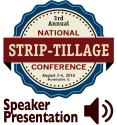Advertise Follow Us
Soil Health
View the secret underground world of soil livestock —including beneficial bacteria, mycorrhizal fungi and earthworms — that are essential to building healthy soils and reducing your cost of production.
ARTICLES
2025 National Strip-Tillage Conference










.png?1692902920)









